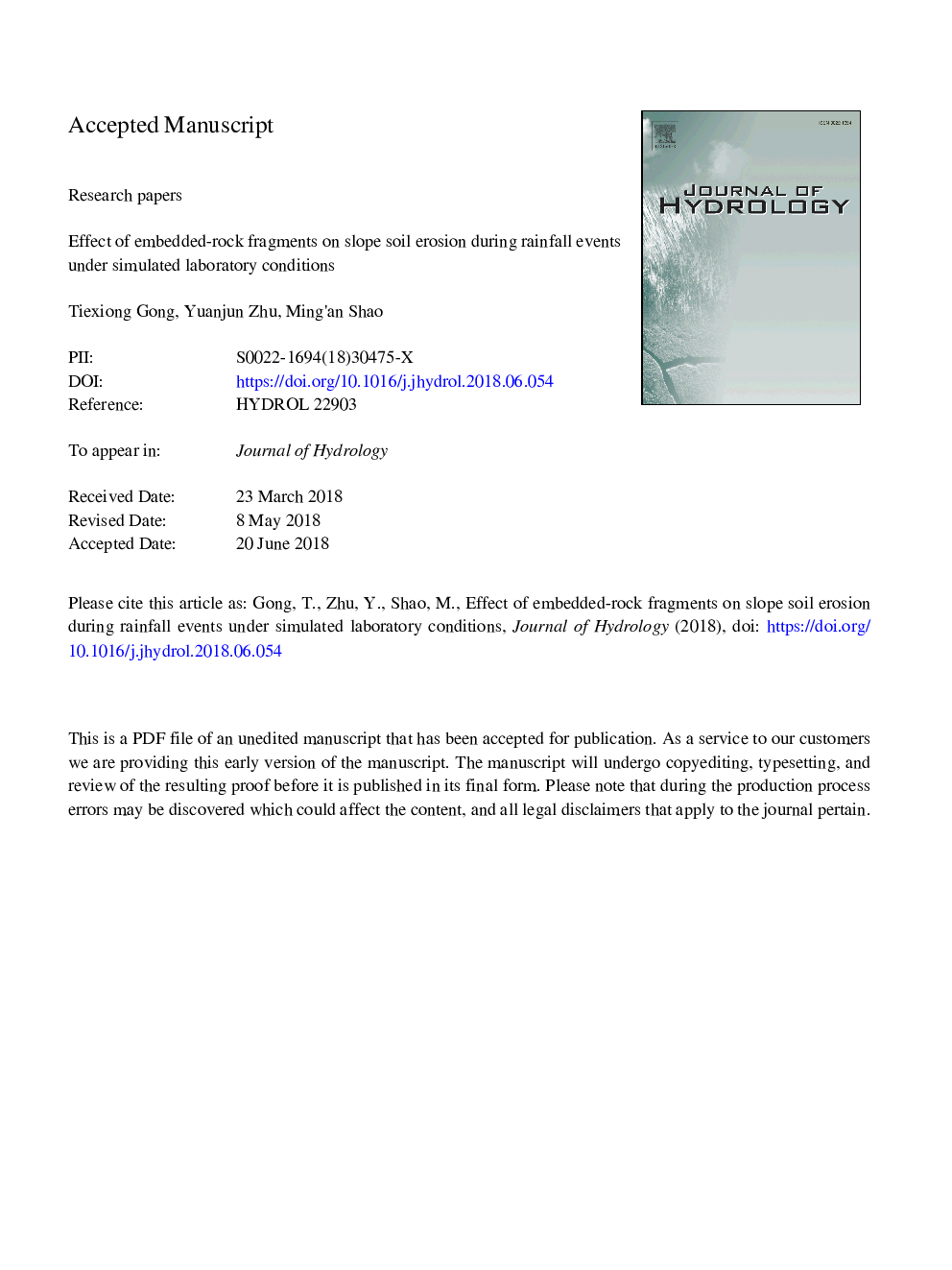| Article ID | Journal | Published Year | Pages | File Type |
|---|---|---|---|---|
| 8894609 | Journal of Hydrology | 2018 | 28 Pages |
Abstract
Quantifying the role of embedded-rock fragments in soil-water processes on a slope is crucial for the application of rock fragments in soil and water conservation practice. In this study, a laboratory runoff and erosion experiment was conducted in the soils embedded with rock fragments (including five rock fragment contents (RC) of 0, 0.1, 0.2, 0.3, and 0.4â¯kgâ¯kgâ1) in a metal flume under three slopes (5°, 10°, and 15°). Results showed that the mean steady infiltration rate in the soil without rock fragment (NULL) was lower than that in the soils containing rock fragments (low rock fragment contents of 0.1-0.2â¯kgâ¯kgâ1 and high rock fragment contents of 0.3-0.4â¯kgâ¯kgâ1, labelled as LOW and HIGH, respectively) as slope gradientâ¯=â¯5°, but was higher than the latter two soils as slope gradientsâ¯=â¯10° and 15°. Initial infiltration rate significantly increased with RC (Pâ¯<â¯0.05). Runoff discharge was negatively related to RC as slope gradientâ¯=â¯5° and was positively related to it as slope gradientsâ¯=â¯10° and 15°. There was a steady sediment concentration (SC) after runoff generated as slope gradientâ¯=â¯5°. Sediment discharge and soil erosion modulus for the treatment of HIGH significantly increased with slope gradient (Pâ¯<â¯0.05). Reynolds number (Re) decreased with RC and the other hydraulic parameters of friction coefficient (f), shear stress (Ï), and stream power (Ï) increase with RC. In general, the embedded-rock fragment in the soil can accelerate soil erosion by changing the ratio of infiltration/runoff, surface roughness, and related hydraulic parameters, especially under higher slope gradients. Our findings suggest that using rock fragments to control soil erosion is workable only under the conditions of lower slope gradients and rock fragment contents.
Related Topics
Physical Sciences and Engineering
Earth and Planetary Sciences
Earth-Surface Processes
Authors
Tiexiong Gong, Yuanjun Zhu, Ming'an Shao,
